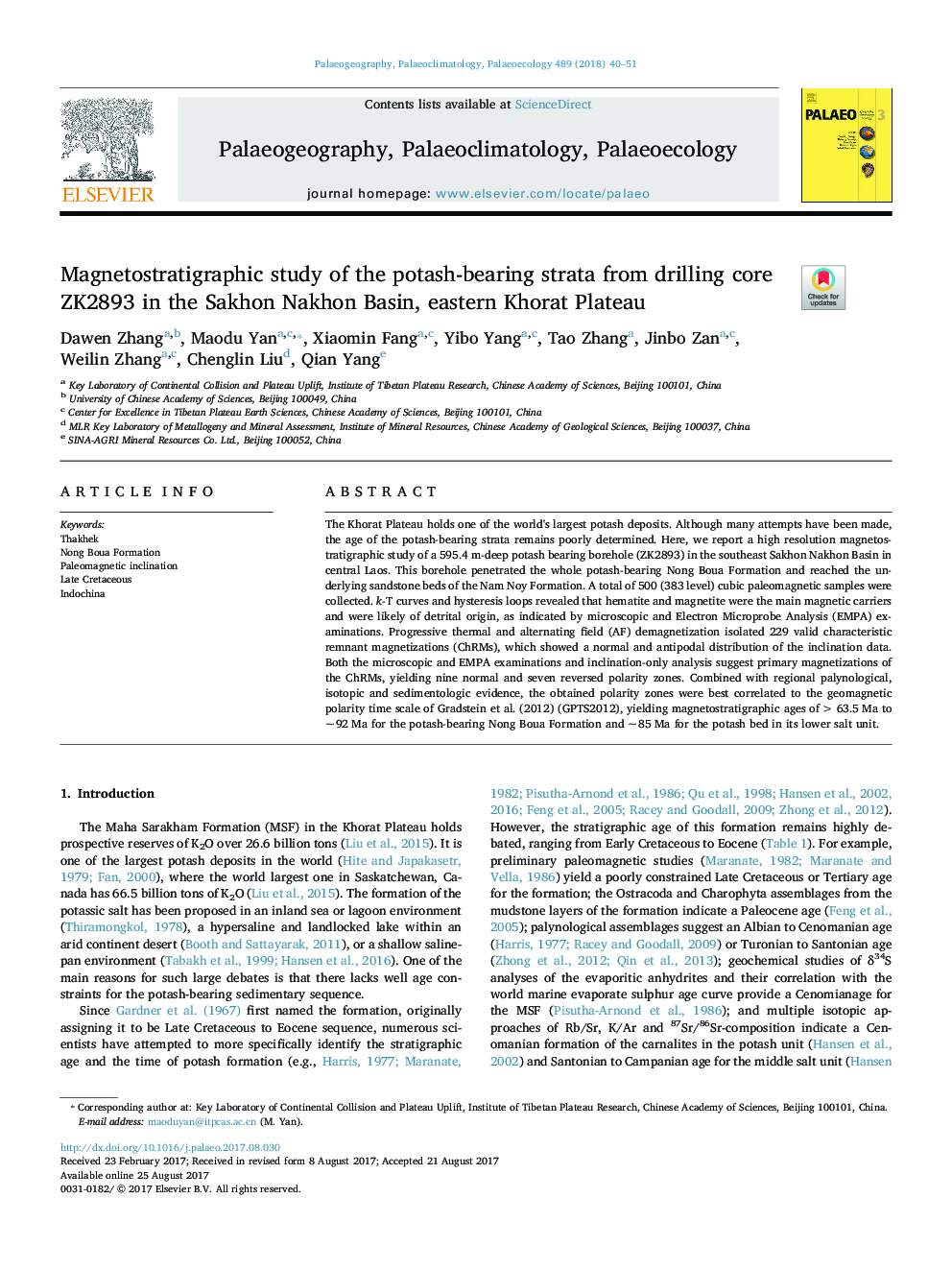| Article ID | Journal | Published Year | Pages | File Type |
|---|---|---|---|---|
| 8868497 | Palaeogeography, Palaeoclimatology, Palaeoecology | 2018 | 12 Pages |
Abstract
The Khorat Plateau holds one of the world's largest potash deposits. Although many attempts have been made, the age of the potash-bearing strata remains poorly determined. Here, we report a high resolution magnetostratigraphic study of a 595.4Â m-deep potash bearing borehole (ZK2893) in the southeast Sakhon Nakhon Basin in central Laos. This borehole penetrated the whole potash-bearing Nong Boua Formation and reached the underlying sandstone beds of the Nam Noy Formation. A total of 500 (383 level) cubic paleomagnetic samples were collected. k-T curves and hysteresis loops revealed that hematite and magnetite were the main magnetic carriers and were likely of detrital origin, as indicated by microscopic and Electron Microprobe Analysis (EMPA) examinations. Progressive thermal and alternating field (AF) demagnetization isolated 229 valid characteristic remnant magnetizations (ChRMs), which showed a normal and antipodal distribution of the inclination data. Both the microscopic and EMPA examinations and inclination-only analysis suggest primary magnetizations of the ChRMs, yielding nine normal and seven reversed polarity zones. Combined with regional palynological, isotopic and sedimentologic evidence, the obtained polarity zones were best correlated to the geomagnetic polarity time scale of Gradstein et al. (2012) (GPTS2012), yielding magnetostratigraphic ages of >Â 63.5Â Ma to ~Â 92Â Ma for the potash-bearing Nong Boua Formation and ~Â 85Â Ma for the potash bed in its lower salt unit.
Keywords
Related Topics
Physical Sciences and Engineering
Earth and Planetary Sciences
Earth-Surface Processes
Authors
Dawen Zhang, Maodu Yan, Xiaomin Fang, Yibo Yang, Tao Zhang, Jinbo Zan, Weilin Zhang, Chenglin Liu, Qian Yang,
